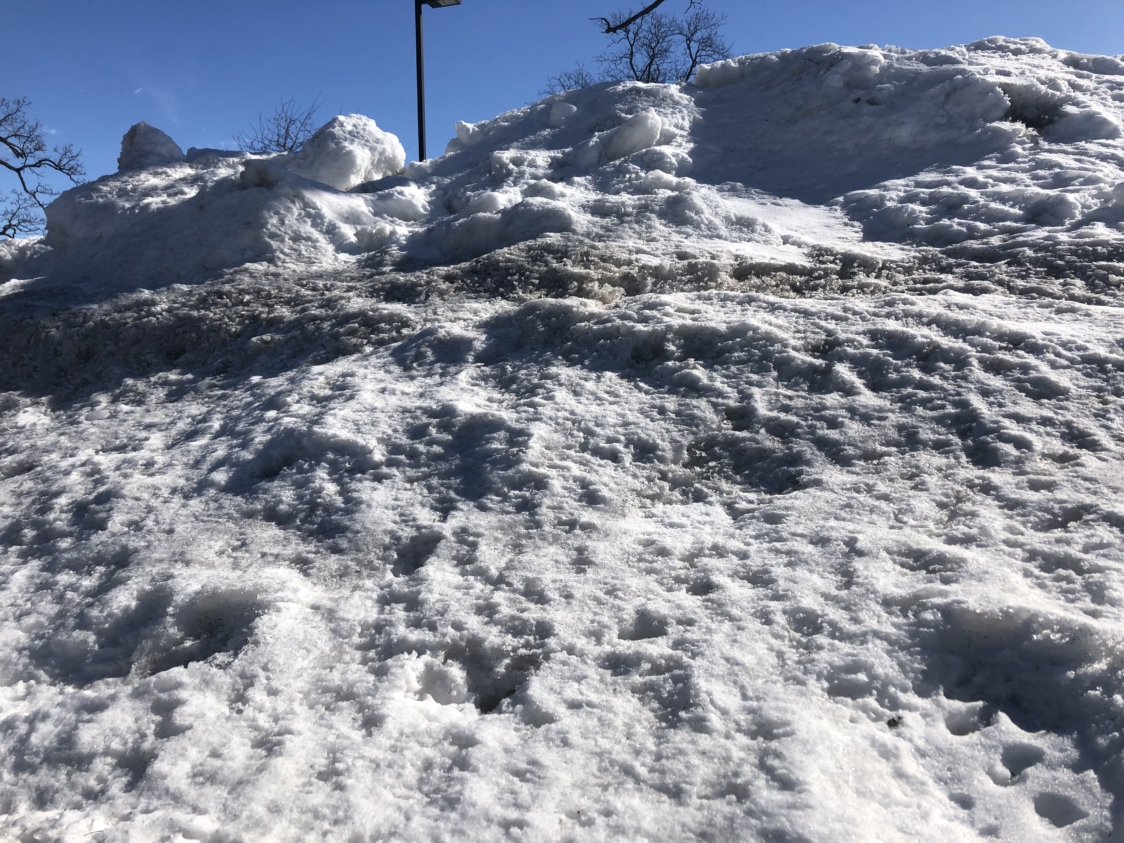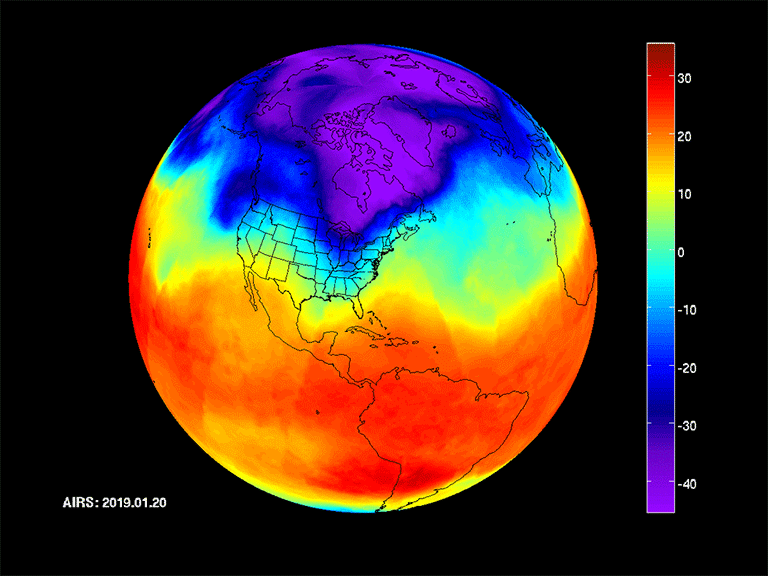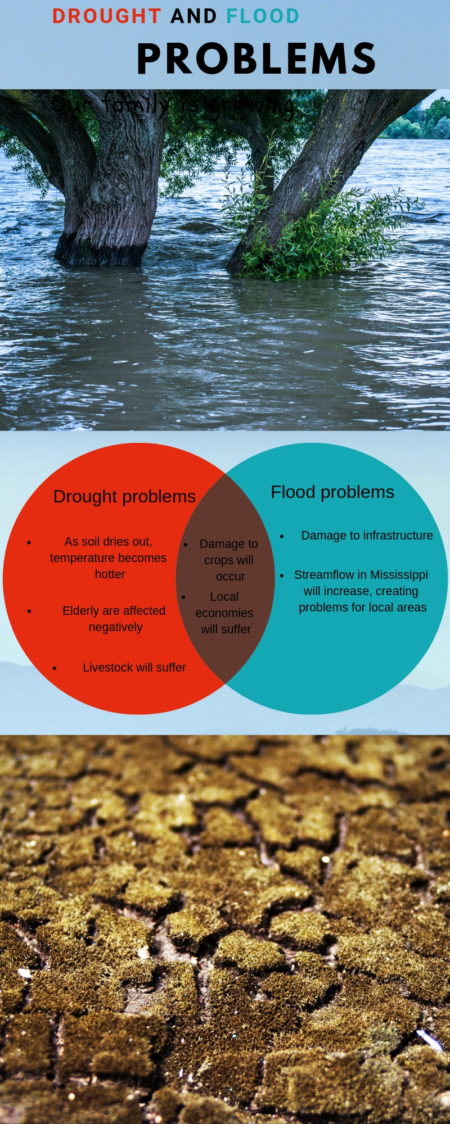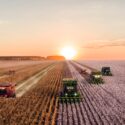The recent “polar vortex” spells only the beginning of environmental trouble for the Midwest

This year’s winter has led heavy piles of snow and extremely cold temperatures in the Midwest, but summer will ultimately prove the damages climate change will bring to the region./ Picture by Jacob Reynolds
Earlier this year, a “polar vortex” barraged the Midwest with extremely cold temperatures. While it may not seem like it, the extreme temperatures are likely a result of climate change.
Whether we like it or not, similar extreme temperatures are set to come to the Midwest sooner rather than later, say climate change experts. While the coasts, not the plains, have been the main focus of climate change’s environmental effects, the Midwest faces additional weather risks beyond the occasional polar vortex, including potentially tornadoes and heatwaves.

The graphic shows the extreme cold temperatures wrought by the polar vortex in early February. The vortex affected Midwestern states most strongly./ Picture via NASA
The polar vortex is a jet stream that gathers in the North Pole each winter. However, recently break-offs have occurred within that structure, causing extreme cold in more southern portions of the globe. According to a study from the University of Potsdam in Germany, that over the last 37 years, the frequency of polar vortexes in the mid-Atlantic area of the globe in mid- to late winter has increased.
The polar vortex issue is “a question the community is trying to work through,” says Bill Gutowski, a climate professor at Iowa State. “There are people who think things like the polar vortex are becoming more frequent because of climate change, and there’s a lot of people who dispute that.”
Some of this air has been drifting to lower latitudes, which in turn causes the polar vortexes, Gutowski continues.
Gutowski agrees polar vortexes may have some responsibility in this change, but has his own reservations. “It seems plausible to me, but I have not studied it in deep detail myself, and like I said there are some people who dispute that notion,” he says.
According to the study “Climate Change Impacts on Iowa 2010” from the Iowa Climate Change Impacts Committee, the future of precipitation in Iowa show a steady increase in summertime flooding along with a predicted 21 percent increase in precipitation in the 2040s climate leads to a 50 percent increase in streamflow in the Upper Mississippi River basin in 50 years. Meanwhile, the same study also shows a steady increase in temperature and declares that temperatures will not drop below 1970s levels again.
However, Silvia Secchi, a professor at the University of Iowa who studies adaptation and mitigation to climate change, says she believes that the effects of climate change are often overlooked in the Midwest. Unusual events, such as the polar vortex or extreme flooding, are often overlooked in a Midwestern setting as one of the results of climate change.
“I think people have a hard time when you have non-regular events and uncertainty on what is causing the event,” Secchi says. “I think it’s hard for people to see a direct relationship between [extreme events] and climate change.
“When you live on the coasts, sea level rises are a much more immediate measure of what is happening,” she continues. “I think that’s why people tend to be less concerned and less aware of what is going on.”

Professor Peter Jacobson, an ecosystem ecologist who teaches at Grinnell College, also sees potential problems for the Midwest in comparison to the coastal states.
“There are many regional differences in how climate change is being experienced,” Jacobson says. “Here in the Midwest, a key change is the increase in intense precipitation events, particularly in the summer.”
This in turn could hurt areas around local rivers, Jacobson contends.
“Certainly, the larger rivers, the border rivers, they’re responding to precipitation with much larger watershed,” Jacobson says. “A lot of the high-impact summer precipitation events–I think that tend to be more localized–and say you’ve got a storm dumping nine inches in a day on a county or two. That has very pronounced effects for a comparatively smaller region.”
Gutowski also says the moisture in the air tends to make extreme heat from climate change less pronounced in early summer months.
“Where we are in the middle of the country there’s been a tendency for this increase in moisture. It’s actually tended to keep the daily maximum temperatures from increasing a lot,” Gutowski says. “As a consequence, when the sun is out in the day causing that evaporation, the maximum temperature might not be as hot as if the ground was drier.”
However, later in the summer the temperatures could become hotter as the soil dries out, Gutowski warns, with a great potential for it to occur frequently later this century.
Extreme temperatures would also be harmful for Midwestern agriculture. The problems will eventually affect the ozone and make problems for agriculture. The Iowa Climate Change study determines, “Annual increases in temperature – and population growth – suggest that there will be future increases in” human-caused heat increases.
Jacobson also says some of the worst possibilities are already happening for states like Iowa.
Jacobson says the probability of extreme events is changing, which in turn puts infrastructure and public safety at risk.
Secchi says there will be major economic impacts from extreme changes in the climate.
“The biggest cost and the biggest impact is going to be in all these disasters happening more frequently,” Secchi says. “If we have droughts and really extreme heat, for example, we have the facts in terms of how the elderly are affected. … (and) the crops will suffer.”
Jacobson predicts the increase in temperatures will be harm crop and animal production in the future.
“I think there is the potential for damage to be pretty widespread,” Jacobson says. “I think the risks to agriculture locally and regionally are pretty profound, whether it’s livestock, whether it’s cropping. There are a lot of potential challenges going forward.”
Jacobson continues, “Corn development is quite temperature-sensitive at certain life stages. Livestock are quite susceptible to temperature extremes within the range of projected increases. Even within the range of ‘moderate’ projections, the agricultural industry is going to suffer increasing impacts in the state in the coming decades.”
“Perhaps most pronounced is the significant increase over the past several decades in the frequency of intense precipitation events and associated flooding,” Jacobson says. “This has had serious and expensive impacts across the state, and such costs will likely only increase going forward.”
In the end, from extreme weather to damage to infrastructure and agriculture, polar vortexes are only the beginning for weather problems in the Midwest. More weather disasters are on the way.
Images by Jacob Reynolds and NASA. Graphics by Jacob Reynolds.

